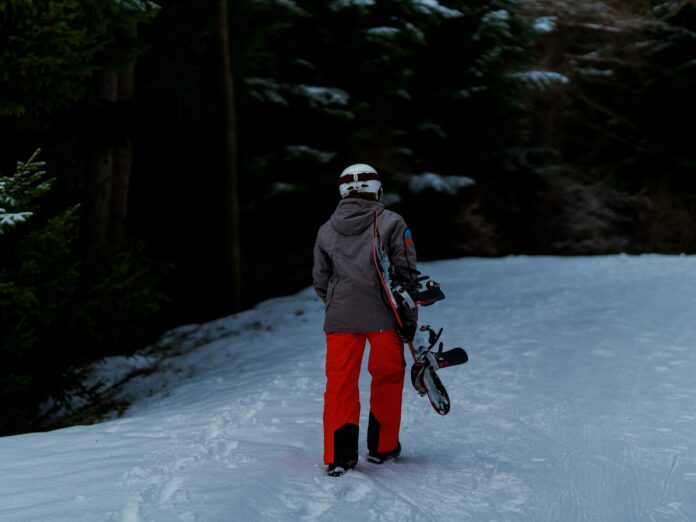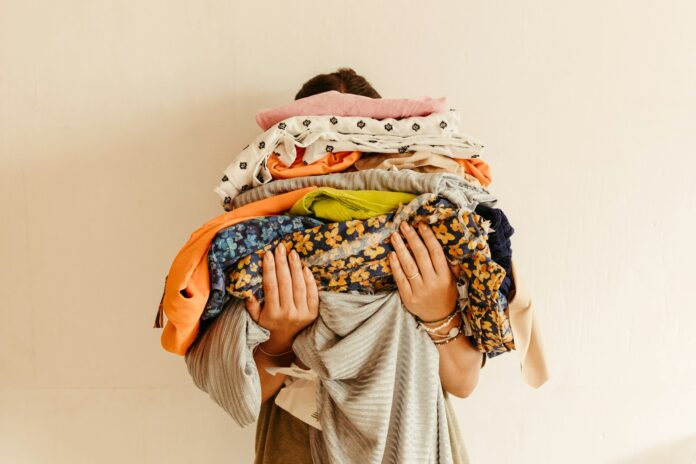In March of this year, the Daily Telegraph published an article declaring Portugal as ‘Europe’s greatest holiday destination’. This echoed a similar sentiment in late 2023, when, once again, the country was voted Europe’s number one tourist destination at the World Travel Awards.
It should come as no surprise to those who have visited recently; the country is blessed with history, heritage and tradition, as well as a culinary culture that gets more delicious with each passing meal.
Portugal is also a country of diverse and jaw-dropping landscapes, which makes it the ideal destination for a walking holiday. But where to focus your attention if you’re looking for the finest hikes the country has to offer?
Well, nestled in the southernmost region of Portugal, the Via Algarviana is a hiker’s paradise stretching over 300 kilometres from the Spanish border in the east to Cape St. Vincent in the west. This long-distance walking path, officially known as the GR13, weaves through the picturesque Algarve region, offering an immersive experience of its natural beauty, charming villages, and cultural heritage. Whether you’re a seasoned trekker or a casual walker, the Via Algarviana has something for everyone.
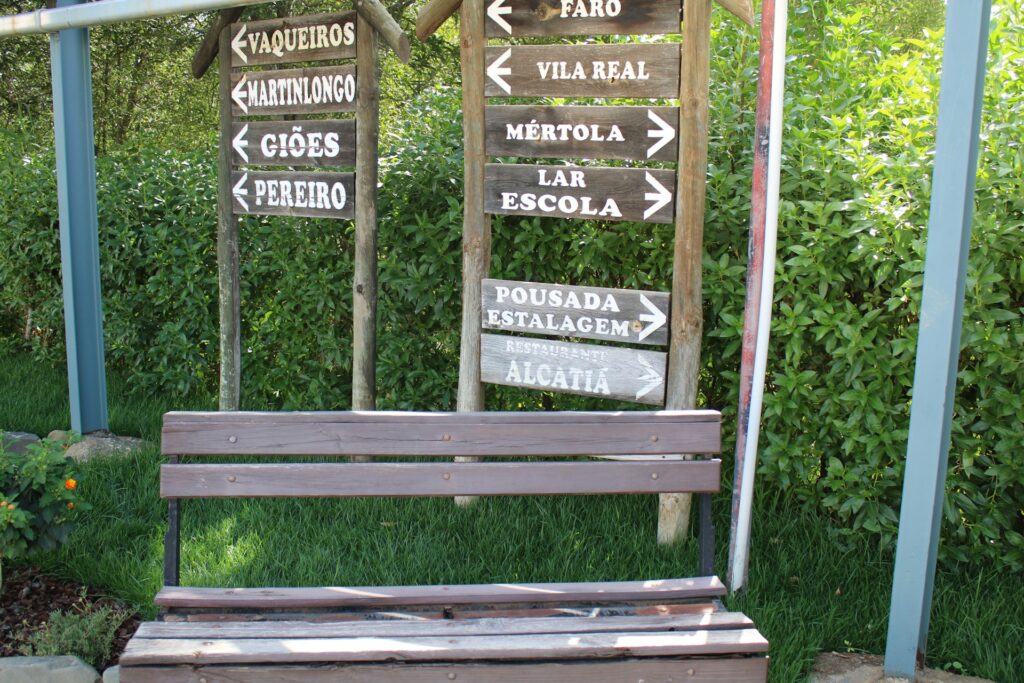
The Best Trails To Explore Along The Via Algarviana
Alcoutim to Balurcos
From here starts the actual journey. Alcoutim is a picturesque small town situated close to the river. Considering the length of almost 24 kilometres, Alcoutim to Balurcos is a great introduction to the Via Algarviana.
During the trail through this section, hikers are likely to come across undulating terrains, beautiful sceneries, and the Guadiana River. The trail begins from Brook trout lake which is a splendid sight, offering a mixture of natural settings and historical features such as old mills and abandoned mines.
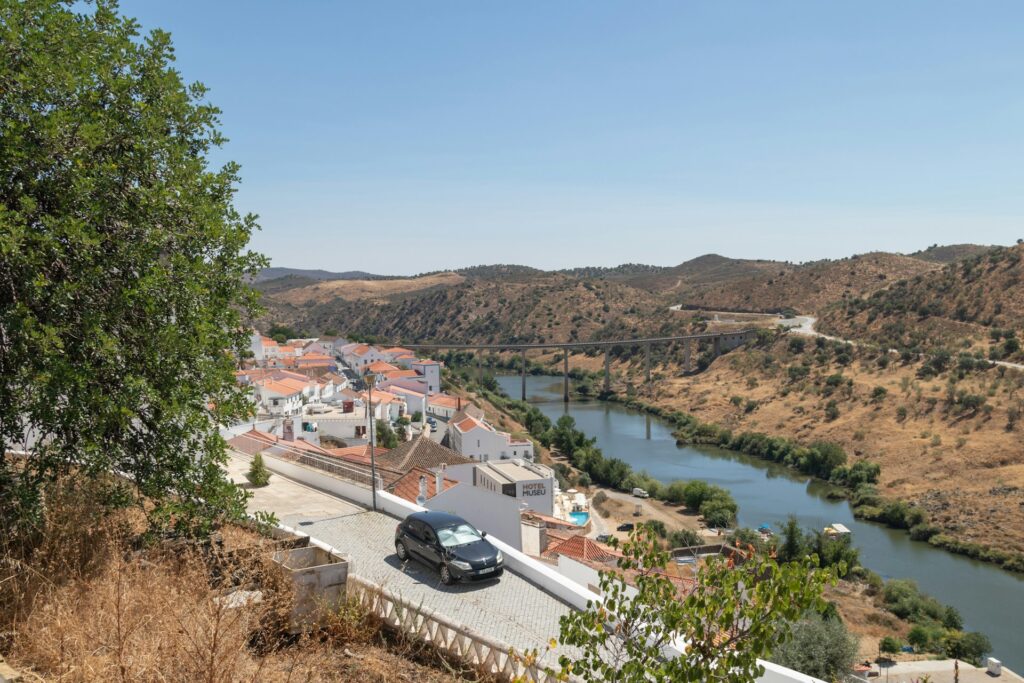
Balurcos to Furnazinhas
This 19-kilometre route from Balurcos to Furnazinhas and this will give you more of the countryside that lies in the Algarve region. From driving, the path covers cork oak forests, olive groves, and simple villages, which provide an insight into the humble way of life here. Furnazinhas, a picturesque village with white houses and cobbled streets shows off a culture and architecture that’s something of an authentic representation of the region.
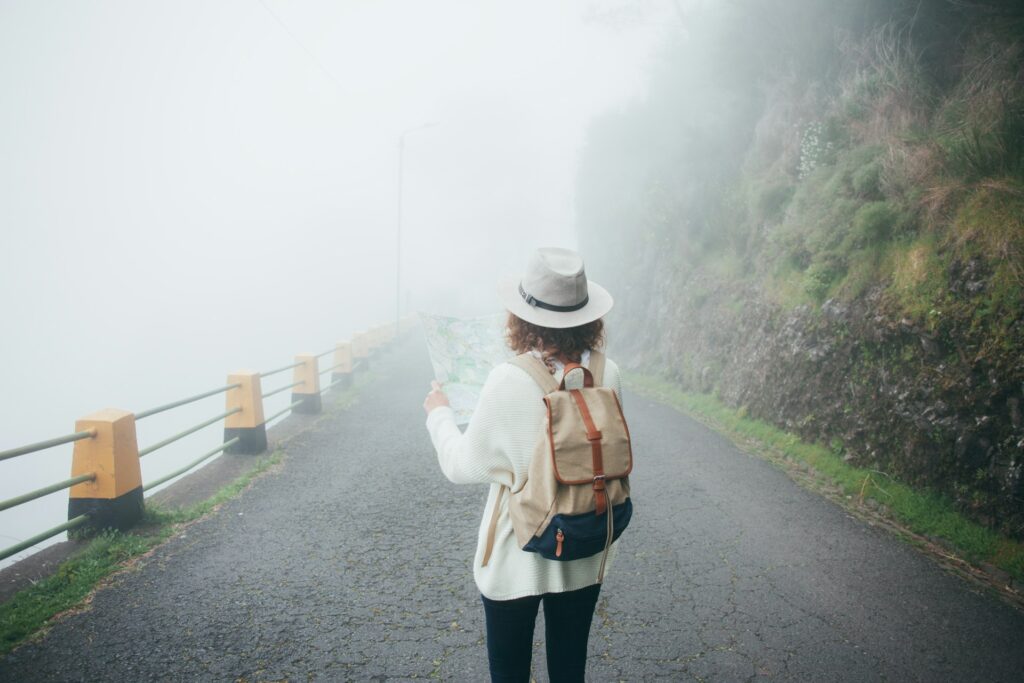
Cachopo to Barranco do Velho
The last 29-kilometre leg from Cachopo to Barranco do Velho is one of the most beautiful parts of Via Algarviana. This route passes through the range of mountains known as Serra do Caldeirão, which is dominated by subtropical forests with wildflowers and magnificent vistas. Barranco do Velho is a picturesque village surrounded by hills and is famous for the original crafts, food and wine of the Algarve. Don’t drink too much of the latter, though; there’s walking to be done tomorrow morning!
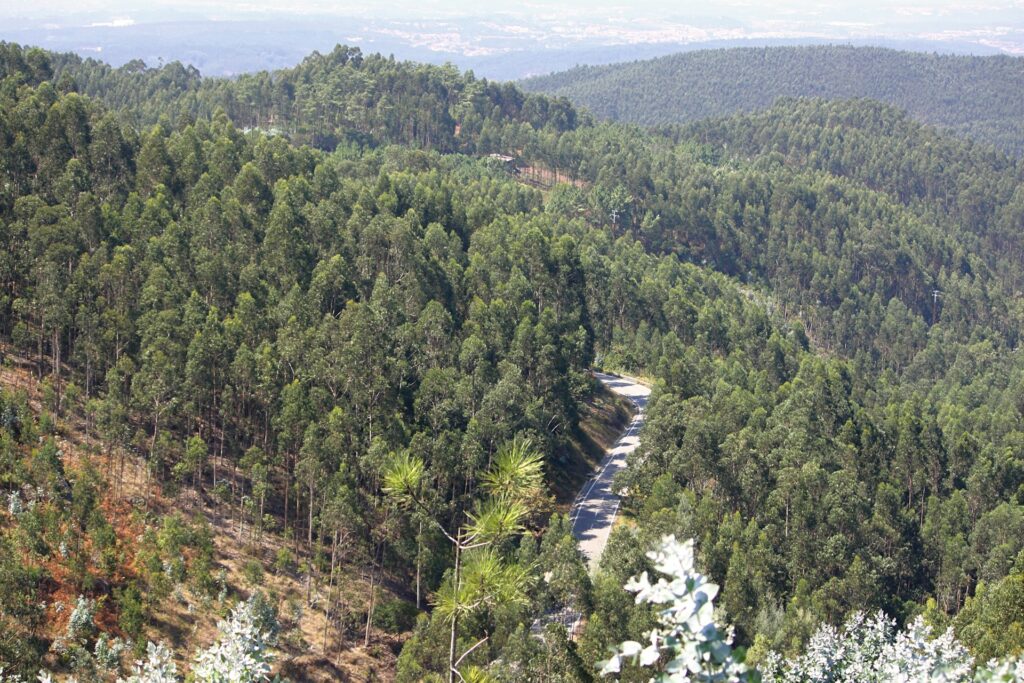
Monchique to Marmelete
Hope you’re not too hungover. This 16 km hike to Marmelete heads off from the thermal spa town of Monchique, which is also notable for the spectacular views of the mountains and its thermal springs.
It follows the Monchique Mountains trail where the views of the Algarve region’s coastline are visible. These are highlights of the walk, no doubt, not least because of the beautiful smell of eucalyptus and pine trees, which are just so refreshing here. Marmelete, the village that we arrive at after this section of the hike, is small, unassuming, and boasts a superbly serene environment.
Marmelete to Bordeira
The 25-kilometre trek from Marmelete to Bordeira traverses diverse terrains, including forests, valleys, and ridges. This section of the Via Algarviana is renowned for its biodiversity, with ample opportunities to spot various bird species and wildlife. Bordeira, located near the coast, offers a unique blend of mountain and seaside scenery, making it an ideal stop for nature enthusiasts. Surfing is huge here, with waves the envy of the world.

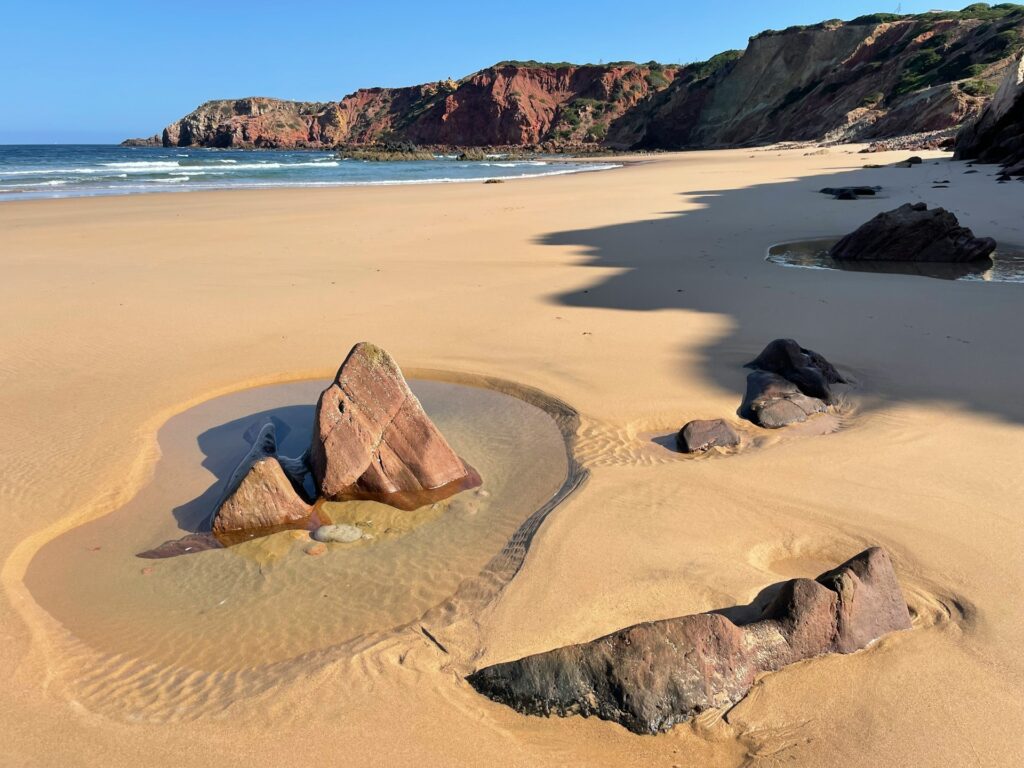
Bordeira to Carrapateira
The 12-kilometre stretch from Bordeira to Carrapateira is relatively short but packed with stunning coastal views. This section takes you closer to the Atlantic Ocean, with the trail meandering through cliffs and sandy paths. Carrapateira is a charming coastal village known for its beautiful beaches and surf spots. It’s a great place to relax and enjoy the ocean breeze.
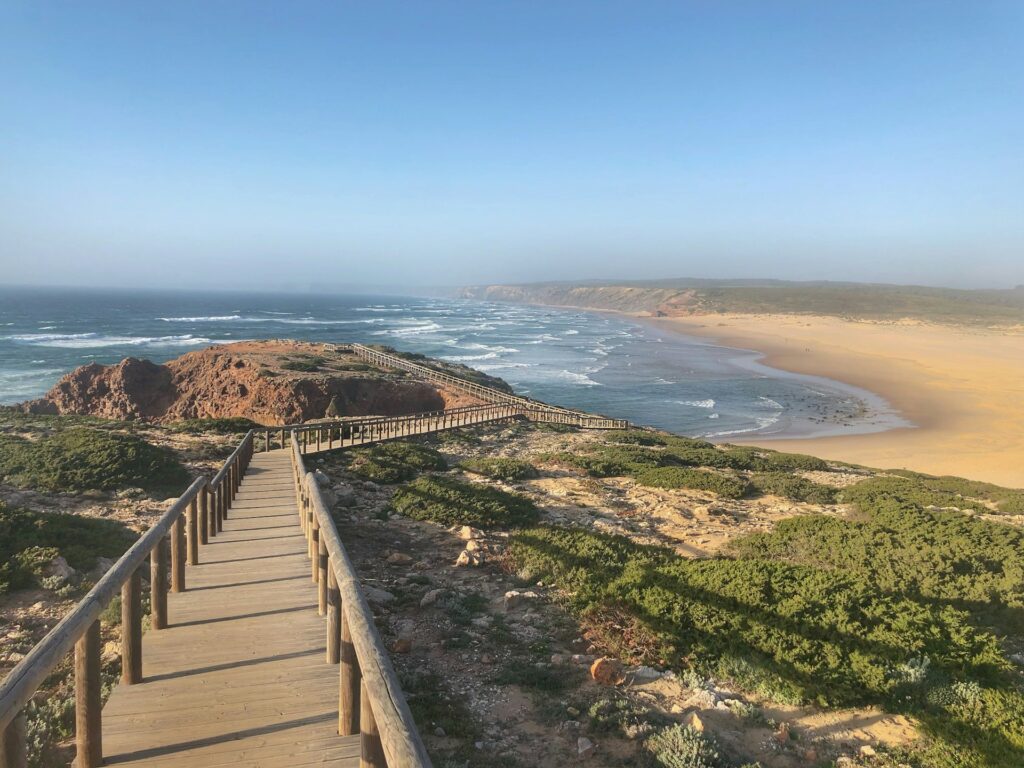
Carrapateira to Vila do Bispo
From Carrapateira, the 22-kilometre hike to Vila do Bispo offers a mix of coastal and inland scenery. The trail passes through rolling hills, agricultural fields, and small forests. Vila do Bispo is a quaint town with a rich history and traditional Portuguese architecture. It’s an excellent spot to rest and explore local culture before the final leg of the journey. While you’re here, check out the beach close to Vila do Bispo, whose carbon rich shale are some of the Algarve’s oldest rocks, dating back some 250 million years.
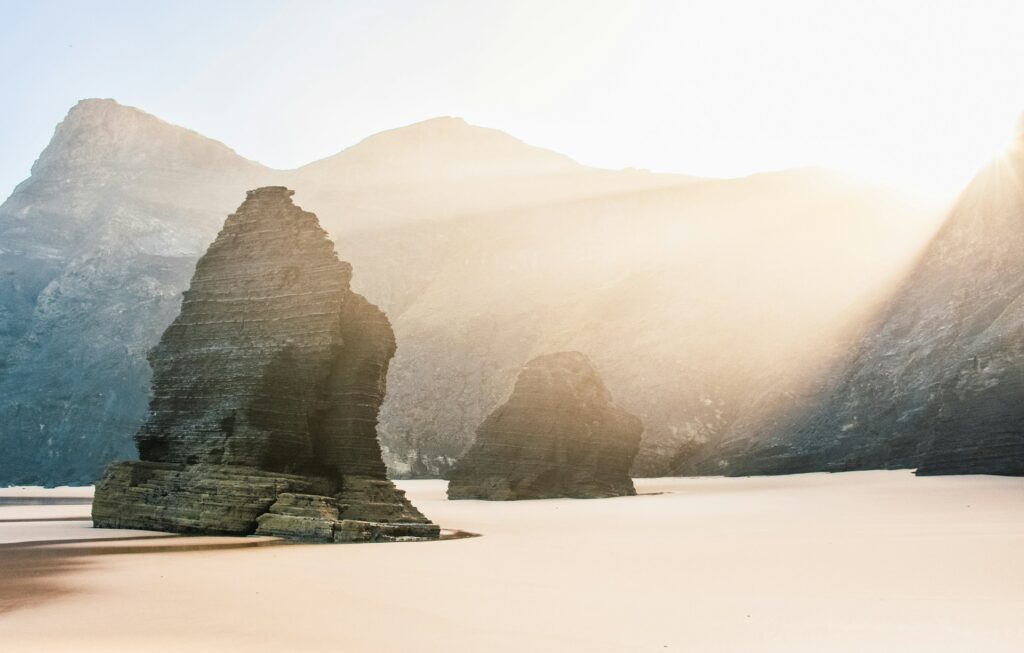
Vila do Bispo to Cape St. Vincent
The final 14-kilometre stretch from Vila do Bispo to Cape St. Vincent is a fitting end to the Via Algarviana. This section takes you through the rugged coastline of the Algarve, with dramatic cliffs and panoramic ocean views.
Cape St. Vincent, the southwesternmost point of mainland Europe, is a breathtaking destination with its iconic lighthouse and stunning sunsets. It’s the perfect place to reflect on your journey and celebrate the completion of the Via Algarviana.
Read: The best cycling holidays in Portugal

Some Practicalities
Before setting off on your Via Algarviana adventure, it’s worth considering a few practical matters to ensure a comfortable and enjoyable journey.
Where To Stay During The Via Algarviana?
It is no surprise that you won’t find vast hordes of luxury resorts covering the length of the Via Algarviana. However, it’s also important to note that wild camping is not allowed here, and there are no designated campsites along the route so feel free to leave your tent behind.
When hiking here, you’ll likely in bed & breakfast inns or guesthouses. These are often beautifully situated in natural settings or one of the charming towns en route.
Weather Considerations
The Algarve enjoys a Mediterranean climate, making it suitable for hiking year-round, though spring (March to May) and autumn (September to November) offer the most pleasant conditions. Summer temperatures can soar above 30°C, making early morning starts essential, whilst winter brings cooler days around 15-18°C with occasional rainfall. The inland sections can be notably cooler than coastal areas, particularly in the Serra do Caldeirão mountains, so layering is advisable.
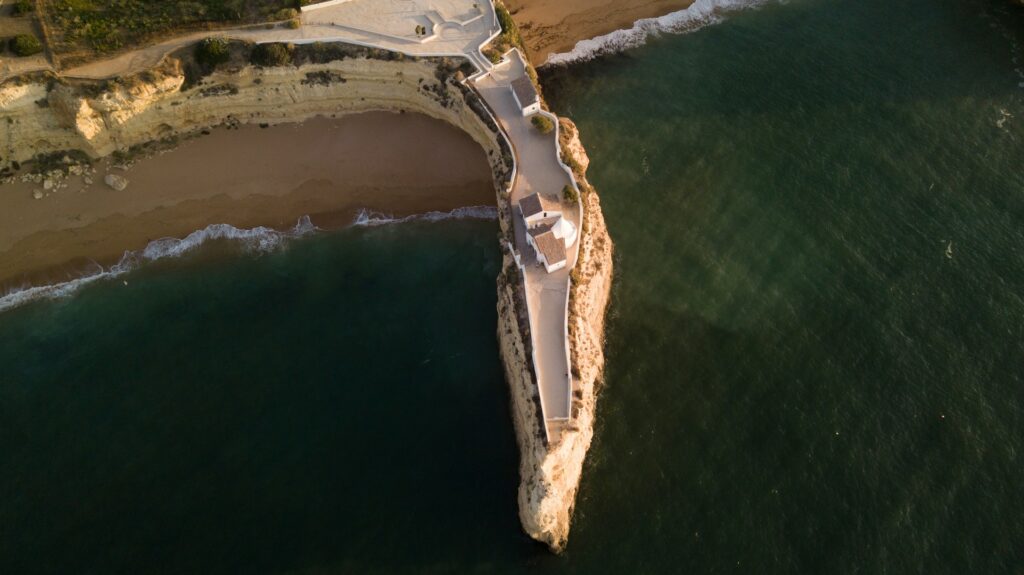
Footwear & Kit
Proper footwear is absolutely essential for tackling the varied terrain of the Via Algarviana. Whilst you’ll encounter everything from rocky paths to sandy coastal sections, a good pair of hiking boots with ankle support will serve you well throughout. When selecting footwear, hiking shoes for men should offer a wider toe box and broader heel cup to accommodate typically larger feet, whilst women’s walking boots need narrower heels and higher arches for proper support. Regardless of gender, prioritise waterproof options with robust grip – the morning dew can make paths surprisingly slippery. Breaking in your boots before the trek is crucial; there’s nothing worse than discovering a hotspot 10 kilometres into your first day.
Additional Essentials
Pack light but smart – you’ll be carrying your kit daily between accommodations. A 30-40 litre rucksack should suffice for most hikers. Don’t forget sun protection (hat, sunglasses, and high-factor suncream), a reliable water system (either bottles or a hydration bladder), and basic first aid supplies including blister plasters. Mobile phone coverage can be patchy in remote sections, so downloading offline maps beforehand is wise. Most villages along the route have small shops for resupplying basics, but don’t count on finding specialised hiking gear or energy bars – bring these from home.
The Bottom Line
The hike along the Via Algarviana is an incredible experience that unveils the marvellous Algarve at every twist of the trail. We can’t wait to walk it with you!




